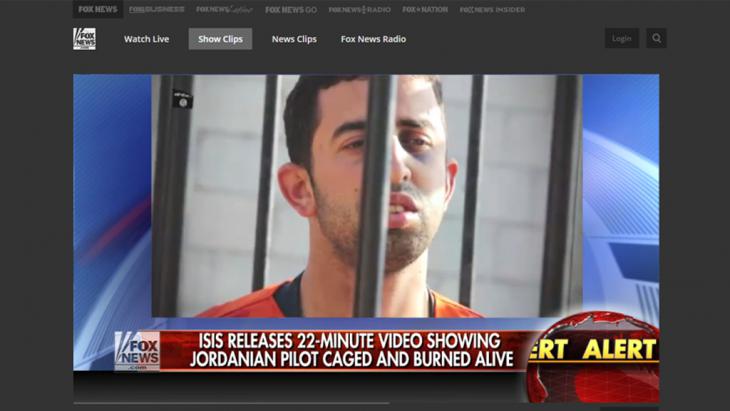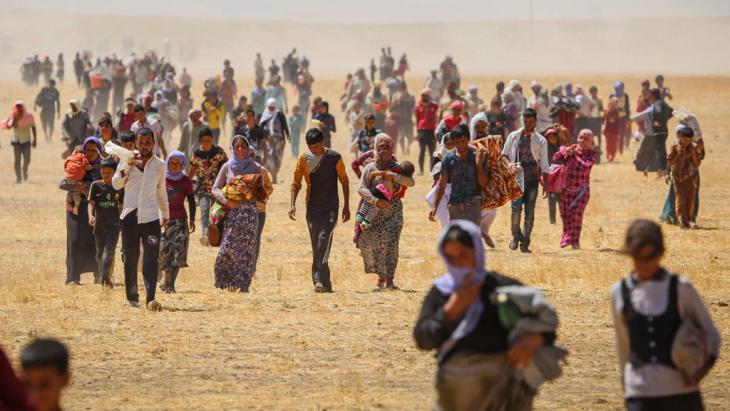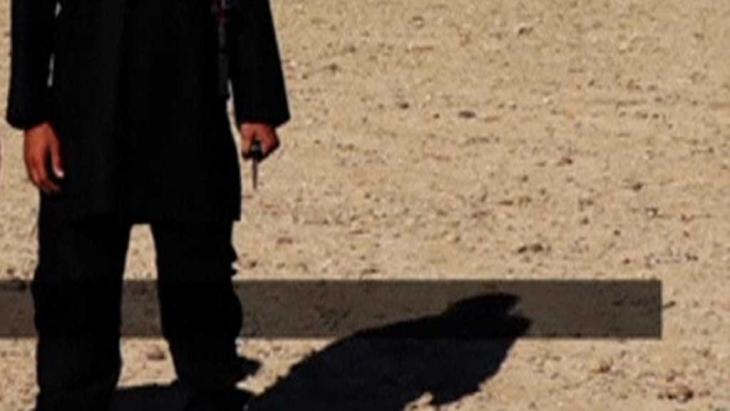Terror in the spotlight

Over the past year, hardly any journalistic medium – whether daily newspaper, online news portal or television channel – has decided not to run images from the group calling itself "Islamic State" (IS). These pictures were combined with the rhetoric of a supposed "image war", which was triggered above all by the beheading videos disseminated by IS.
This raises the question as to how great the significance of these images actually is, where they unleash their actual potency and how they link up with political decisions on whether to mount a political or military intervention in the region or to refrain from doing so.
Most of the images that reach us via IS are part of a classic war propaganda campaign and were produced by IS itself. Many of the pictures show events that have been staged, from beheadings on camera to the steamrollering of the border fortification between Iraq and Syria. These are so-called "image operations". They are "pictorial acts" that are part of a well-planned PR campaign that utilises the most modern means and focuses on new communication channels such as social media.

Pictorial acts with a double impact
These pictorial acts have a double impact: on the one hand, they are aimed at the enemy and seek to showcase IS's alleged victory and fuel fear; on the other, they are aimed at IS's own followers and are intended as a show of strength. They therefore function as a recruitment tool. The supposedly new quality of these images lies in their brutality and force. However, this kind of image policy in itself is by no means a new phenomenon.
Many media organisations have trouble illustrating what is happening in the regions controlled by IS, since independent journalists have almost no access to these regions and are putting their lives at risk by going there. For this reason, German daily papers are relying on IS's PR images to illustrate articles on current events or to provide visuals for background stories.
The problematic aspect here is that the PR pictures they use are often not contextualised as such. The fact that images from IS are so prevalent in our media, however, has less to do with the actual relevance of the events they document than with the short-termist, topical thinking of the mass media, and with an anti-Islamic discourse for which the Islamist propaganda pictures are a perfect fit.
Let's not fool ourselves: these images have a function: they serve to underpin the image of Islam as a supposedly violent religion juxtaposed with the image of the secular Kurds fighting for the liberation of Kobani. Pictures of the day-to-day experience of war in Syria don't stand a chance against them.
Every execution of a Western hostage in IS captivity becomes a news event that is not only splashed all over the front pages, but also quickly leads to a meta-discussion about images and war and to the labelling of the others as "barbarians". A significant feature of this phenomenon is that many Western media consumers have not seen the actual beheading videos, which usually vanish again as quickly as they appear.
The spectre of the Islamic threat that suddenly appears on the horizon is partly the fault of short-sighted media reporting on the region and partly that of the (geo-)political interests of IS's opponents. Those who portray IS as an irrational, powerfully pictorial perpetrator of violence overlook – probably consciously – the social and political causes of the violence.

Social media as the battleground of IS
However, the real playground for IS's PR units is not journalistic media, but Internet-based social media. Thanks to the Internet and digitisation, it is now possible for agents in a conflict – agents such as IS – to communicate directly with the public and to address them directly. While the mass media for a long time acted as the gate-keepers who could decide whether particular images were shown or not, this function now lies with companies like YouTube, Facebook and Twitter.
The only method of control these companies have is to delete specific content. However, by the time this happens, the films and images have usually already reached a wide audience. In social media in particular, the images acquire a dynamic of their own that is almost impossible to control, and this is where they can have the greatest impact.
In these situations, the claim is always made that IS pictures are forcing Western governments into action. This claim should be critically examined. Up to now, we have seen no empirical evidence that political action has been prompted by images from war-torn regions. Even in the most frequently cited examples of this connection – the Vietnam War and the US intervention in Somalia – images were at most used as justification for political decisions that had long been made already.
The same is probably true in the case of IS. We should also consider whether, despite the horror of the images, pictures of individual Europeans being executed should serve as justification for acts of war. By contrast, there are hardly any pictures of the sections of the population most affected, such as the Yazidis and other religious minorities being persecuted by IS.
In spite of the horror of the images being disseminated by IS, it is important not to fall into the rhetoric of a war of images, as a few Western media outlets and politicians have done. This rhetoric is problematic, since its goal is to take pictorial acts as a justification for military action.

Focusing on civil conflict management
However, the decision for and against both military and civil action should not be made dependent on propagandist images, but on political facts and humanitarian necessity. The task of civil conflict management is twofold: firstly, to emphasise the civil character of images, and secondly, to seek ways and means of preventing images from being used as the justification for violence.
Civil society agents working in civil conflict management, and educators working in the areas of media and peace, must also develop methods of decoding contemporary war propaganda of the kind being put out by IS and by many other state and non-state agents.
This task must focus firstly on improving the ability of consumers to contextualise images and to recognise pictorial acts. Secondly, it must manage the balancing act between realising that images of war are being used as a propagandist, war-mongering tool for mobilisation, while at the same time preserving an emotional reaction to the contents.
"It is not the photo of the deed that is degrading, but the deed itself", said the journalist Evelyn Finger in an article for the German weekly paper "Die Zeit". In the same paper, her colleague Daniel Etter, a friend of the US journalist James Foley, who was murdered by IS, expressed the hope that the media would have to rethink its strategy and stop spreading these images.
This fits with something for which Karim El-Gawhary has argued on Qantara.de: widening our gaze and turning the telephoto lens away from Kobani and IS. This also applies to the rhetoric of images: the focus should not be on IS's propaganda pictures, but on a multiplicity of journalistic images that can do justice to the complexity of the conflict situation in the region. And if images are not available, then the quality of the text should be trusted to conjure up "mental images" in the minds of the media consumers.
Felix Koltermann
© Qantara.de 2015
Translated from the German by Ruth Martin